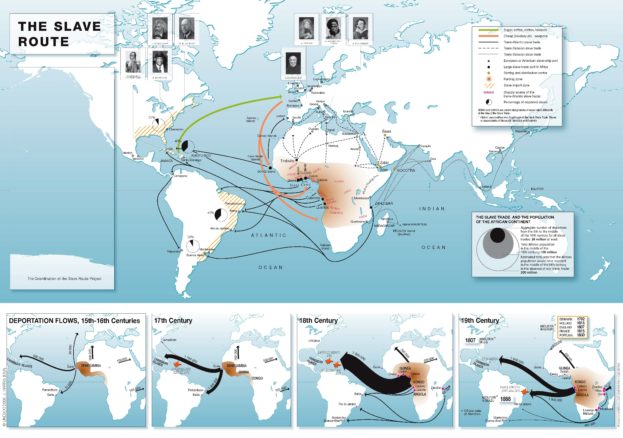
Anyone who has had their DNA tested will have noticed groups of people carrying the same DNA in far fetched regions. How did this come to be one would ask oneself? A Tongan ancestor? It may well be the case as our ancestry is so diverse that nothing is impossible nor surprising.
There is yet a more sinister side to the story which isn’t told. We focus on the Atlantic Slave Trade quite naturally because the Western Hemisphere where we live was quite remote until relatively recently to, for example, Macao. Do we dare to think, what if?
What if, there was a mother long ago whose children were separated either intentionally or through enslavement and one ended up on one side of the world and another on the other side. All lost to their homelands and relatives forever!
It hardly bears thinking about.
This series, however, will focus on facts. What is the true story behind the enslavement of the “black-being” over a four century long period in one of the greatest dehumanizing enterprises in history?
Thanks to groundbreaking work and research by UNESCO and Universities throughout Africa amongst others, in the coming months we will be looking at the history of the Great Dispersion of the African people, the global effect on economies, culture, race and much more.
The enslavement of black Africans was an economic/commercial venture spanning several continents and regions from the Arab World, Asia, The Indian Ocean, The Caribbean the Americas and of course Africa. Based on a contemptuous ideology these “mobile assets” eventually constituted the legal framework of slavery in the Americas. Whilst there is much to be elucidated from the maps, on close inspection it is easy to see how disparate the African Diaspora is today and why.
Numbers And More Numbers
How often have we heard figures ranging from 11 million people to 100 Million people but in fact these figures only cover certain periods in certain places at a given time. Note the vast numbers by the 17th Century that were going North and when one compares the flow in the 15th-16th centuries to the Caribbean islands it is devastating because these were not places where people survived for very long under enslavement. By the 19th Century the figures that we know about had dramatically increased in all directions.
Some Great Black Historical Figures of That Era and Beyond
This month we have focused on some of the notable characters who through their own personal traumas and heritage managed to make a significant and lasting difference that affects us all today. This list is by no means exhaustive and certainly isn’t conclusive.
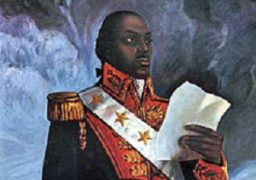 Toussaint L’Ouverture, (b. May 1743 –d. April 1803) the best-known leader of the Haitian Revolution. The former slave began his military career as a leader of the 1791 slave rebellion in the French colony of Saint Domingue (now Haiti). He transformed the insurgency into a revolution, by 1800 he turned, the most prosperous slave colony of the time, into the first free colonial society to have explicitly rejected race as the basis of social ranking.
Toussaint L’Ouverture, (b. May 1743 –d. April 1803) the best-known leader of the Haitian Revolution. The former slave began his military career as a leader of the 1791 slave rebellion in the French colony of Saint Domingue (now Haiti). He transformed the insurgency into a revolution, by 1800 he turned, the most prosperous slave colony of the time, into the first free colonial society to have explicitly rejected race as the basis of social ranking.
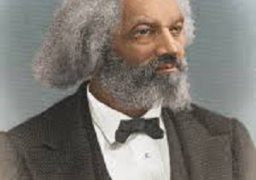 Frederick Douglass (b.1885 – d.1895) was an American social reformer, abolitionist, orator, writer, and statesman. After escaping from slavery in Maryland, he became a national leader of the abolitionist movement in Massachusetts and New York, gaining note for his oratory and incisive antislavery writings. Douglass wrote several autobiographies. He described his experiences as a slave in his 1845 autobiography, Narrative of the Life of Fredrick Douglass, an American Slave, influential in promoting the cause of abolition.
Frederick Douglass (b.1885 – d.1895) was an American social reformer, abolitionist, orator, writer, and statesman. After escaping from slavery in Maryland, he became a national leader of the abolitionist movement in Massachusetts and New York, gaining note for his oratory and incisive antislavery writings. Douglass wrote several autobiographies. He described his experiences as a slave in his 1845 autobiography, Narrative of the Life of Fredrick Douglass, an American Slave, influential in promoting the cause of abolition.
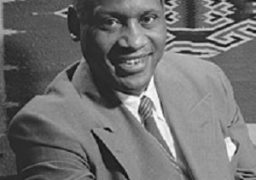 Paul Leroy Robeson (b. April 9, 1898 – d. January 23, 1976) born in New Jersey, America was a bass baritone, concert artist and stage and film actor who became famous both for his cultural accomplishments and for his political activism. Educated at Rutgers College and Columbia University, he was also a star athlete in his youth. In 1979, James Earl Jones starred in a film and stage play about Paul Robeson’s life.
Paul Leroy Robeson (b. April 9, 1898 – d. January 23, 1976) born in New Jersey, America was a bass baritone, concert artist and stage and film actor who became famous both for his cultural accomplishments and for his political activism. Educated at Rutgers College and Columbia University, he was also a star athlete in his youth. In 1979, James Earl Jones starred in a film and stage play about Paul Robeson’s life.
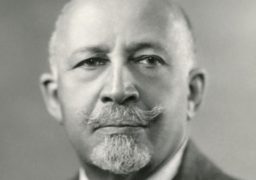 W.E. Du Bois (b. August 27, 1868- d. August 27, 1963) was an American sociologist, historian, civil rights activist, Pan-Africanist, author, writer and editor. Born in Great Barrington, Massachusetts. Du Bois rose to national prominence as the leader of the Niagara Movement a group of African-American activists who wanted equal rights. His collection of essays, The Souls of Black Folk, is a seminal work of African American Literature.
W.E. Du Bois (b. August 27, 1868- d. August 27, 1963) was an American sociologist, historian, civil rights activist, Pan-Africanist, author, writer and editor. Born in Great Barrington, Massachusetts. Du Bois rose to national prominence as the leader of the Niagara Movement a group of African-American activists who wanted equal rights. His collection of essays, The Souls of Black Folk, is a seminal work of African American Literature.
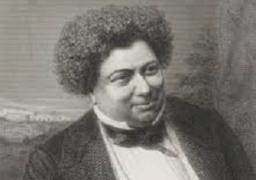 Alexandre Dumas (b. 24 July, 1802 – d. 5 December, 1870) was a famous French writer, who wrote, The Three Musketeers (1844), The Count of Monte Christo (1844-1845) and The Man With the Iron Mask. Dumas was the son of Haitian, Thomas-Alexandre Dumas a decorated general, who fought in the French Revolution. Dumas stories were inspired by the stories his father told him about the French Revolution.
Alexandre Dumas (b. 24 July, 1802 – d. 5 December, 1870) was a famous French writer, who wrote, The Three Musketeers (1844), The Count of Monte Christo (1844-1845) and The Man With the Iron Mask. Dumas was the son of Haitian, Thomas-Alexandre Dumas a decorated general, who fought in the French Revolution. Dumas stories were inspired by the stories his father told him about the French Revolution.
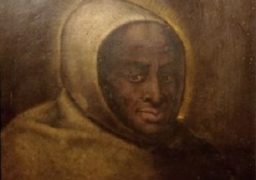 St- Benedict Il Moro (b. 31 March 1526 – d. 4 April 1589) Benedict the Moor, was an Italian Franciscan friar in Sicily who is venerated as a saint in the Catholic and Lutheran churches. Born of African slaves in San Fratello, Italy. In 1743, Benedict was beatified by Pope Benedict XIV, and in 1807 he was canonized by Pope Pius VII. Benedict’s feast day is celebrated on April 4th.
St- Benedict Il Moro (b. 31 March 1526 – d. 4 April 1589) Benedict the Moor, was an Italian Franciscan friar in Sicily who is venerated as a saint in the Catholic and Lutheran churches. Born of African slaves in San Fratello, Italy. In 1743, Benedict was beatified by Pope Benedict XIV, and in 1807 he was canonized by Pope Pius VII. Benedict’s feast day is celebrated on April 4th.
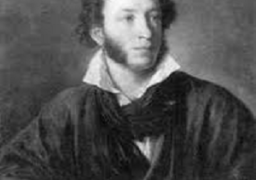 Alexander Sergeyevich Pushkin (b. 6 June 1799, Moscow, Russia – d. 10 February 1837, Petersburg) a poet, playwright, and novelist of the Romantic era who is considered by many to be the greatest Russian poet and the founder of modern Russian literature. Pushkin was born into Russian nobility in Moscow. His great-grandfather was an African slave, Abram Petrovich Gannibal, who later became a military engineer and decorated Russian general “Peter the Great”.
Alexander Sergeyevich Pushkin (b. 6 June 1799, Moscow, Russia – d. 10 February 1837, Petersburg) a poet, playwright, and novelist of the Romantic era who is considered by many to be the greatest Russian poet and the founder of modern Russian literature. Pushkin was born into Russian nobility in Moscow. His great-grandfather was an African slave, Abram Petrovich Gannibal, who later became a military engineer and decorated Russian general “Peter the Great”.
The Maps
Whilst they give us great insight as to to scope of this tragedy, its deeper causes, modalities and consequences have yet to be explored and this is the basic objective the UNESCO member states set for the Slave Route Project. They say “issues at stake are historical truth, human rights, development identity and citizenship in modern multicultural societies. The idea of ‘route’ signifies first and foremost, the identification of itineraries of humanity, i.e. circuits followed by the slave trade and in this sense, geography sheds light on history.” They make it clear that the slave trade map not only lends substance to this early form of international trade but also by showing the course it took illuminates the impact of the system.
Sources: UNESCO 2006 Joseph Harris( USA ) and UNESCO Slave Route Project
BHM Editorial Intern: Serena Lee
